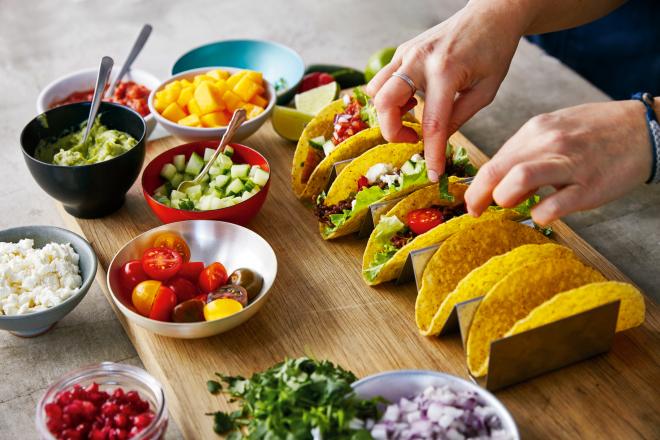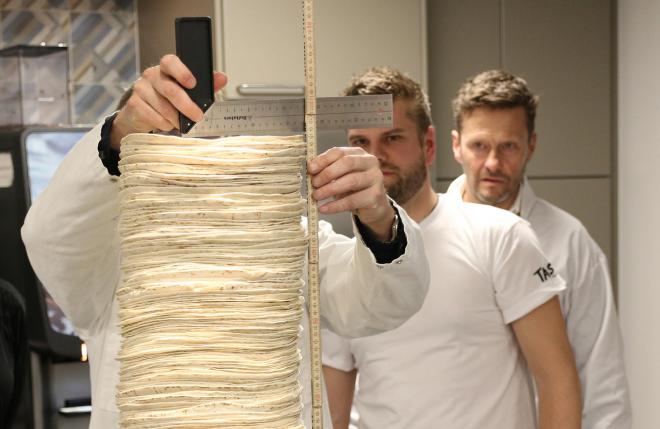Over the decades, Swedes have grown accustomed to flavours from all over the world. Children with families love to have tacos at weekends. “At Paulig, we talk a lot about vegetarian diets and sustainable development but also ready meals and the significance of taste for a product’s success. We want to offer new taste experiences,” says Peter Blomgren, Strategic R&D Expert at Paulig Foods.
What is the first thing that comes to mind about Swedish cuisine?
“Very different foods and culinary traditions from all over the world are part of modern Swedish everyday life. However, many Swedes still eat traditional Swedish dishes several days of the week – ‘husmanskonst’ hasn’t lost its grip. However, its flavours have changed, and traditional dishes have been affected by the cuisines of many different cultures.”
How would you generally describe Swedish culinary culture?
“Previously, Swedish food was largely based on meat, fish and root vegetables. This has changed tremendously. However, Swedes are still very conservative when it comes to choosing food for the big holidays. Often, it’s still loads of salmon, pork and minced meat for the feasts.”
“On weekdays, we only spend approximately 36 minutes a day on cooking. However, at weekends, we like to pamper ourselves with food, and cooking is part of social quality time.”

How has the culinary culture changed over the years?
“Many things have changed in the past 50 years. Swedes have become accustomed to the winds of change blowing in from elsewhere in the world. We use a lot more spices than we used to. Asian cuisine, such as Thai food, affected our eating significantly in the 1980s and 1990s. We have also adopted eating tacos – especially on Fridays. In fact, tacos are the most popular weekend dish for families with children.”
“In the 2000s, Nordic cuisine has become a hit. It is based on Nordic ingredients and has mild but delicately contrasted flavours.”
“The culinary cultures of small and big cities are very different from one another. In big cities, people eat out more in restaurants and grab takeaway meals. Nowadays, especially young people are more interested in plant-based food. In 2017, the consumption of meat took a downward turn in Sweden. The reasons for going vegetarian and eating more plant-based food include people’s growing desire to look after themselves and the concern over animal rights.”

Is the discussion about food lively in modern Sweden?
“Yes. Food is a topic that is discussed in the media almost daily. Great examples of this include the lively dialogue with consumers regarding the renewal of our spice jars and the successful world-record tortilla hunt.”
What kinds of topics and perspectives have been raised in particular?
“Today, many influencers talk about the significance of vegetarian food and the effects of sustainable choices and lifestyle. Over the past few years, there has also been talk about natural ingredients and avoiding additives and processed food.”
What is your favourite food and how is it best enjoyed?
“Nowadays, there are so many different and delicious options on offer that it’s hard to select just one favourite. However, a perfectly cooked piece of cod seasoned with wasabi and sesame is one of my absolute favourites.”
Why are people today so interested in food?
“It’s very much a question of lifestyle. Some people travel a lot, taking different influences and trends with them. Others are very interested in healthy living and aware of the effect food has on health.”
“Food is also entertainment and pampering. There are countless TV shows, podcasts and blogs about food. Many chefs have turned into celebrities and heroes. The young generation gets their cooking influences through digital channels.”

Which trends interest you in particular?
“At Paulig, we talk a lot about vegetarian diets and sustainable development, but also ready meals and the significance of taste for a product’s success. We want to offer new taste experiences.”
Please share an important food memory with us.
I had the opportunity of having lunch at restaurant Noma a few years back. It is a strong memory because of all the influences and nuances I experienced during those two or three hours. It was truly incredible. All the ingredients were local. In addition, eating fresh ceviche in Lima, Peru was an unforgettable experience.”
Peter Blomgren
- Career: Peter Blomgren started at Paulig Santa Maria as the Director of the R&D Unit in 2001. Nowadays, he is a Strategic Expert of the R&D unit. Before Paulig, he has worked at SCA Hygiene Products and Orkla, among other companies.
- Hobbies: Food, wine and travelling. Peter is also a keen athlete: “I love skiing, ice hockey, golf and spending time outdoors in general.”
- What was the last book you read? Marie Hermanson’s novel Den stora utställningen (The Great Exhibition) and Hans Rosling’s book Factfulness.
Read also:
More spice, more colour!
Traditional recipes are in fashion
Immigration transforms the worlds of flavours
A whole lotta potatoes!